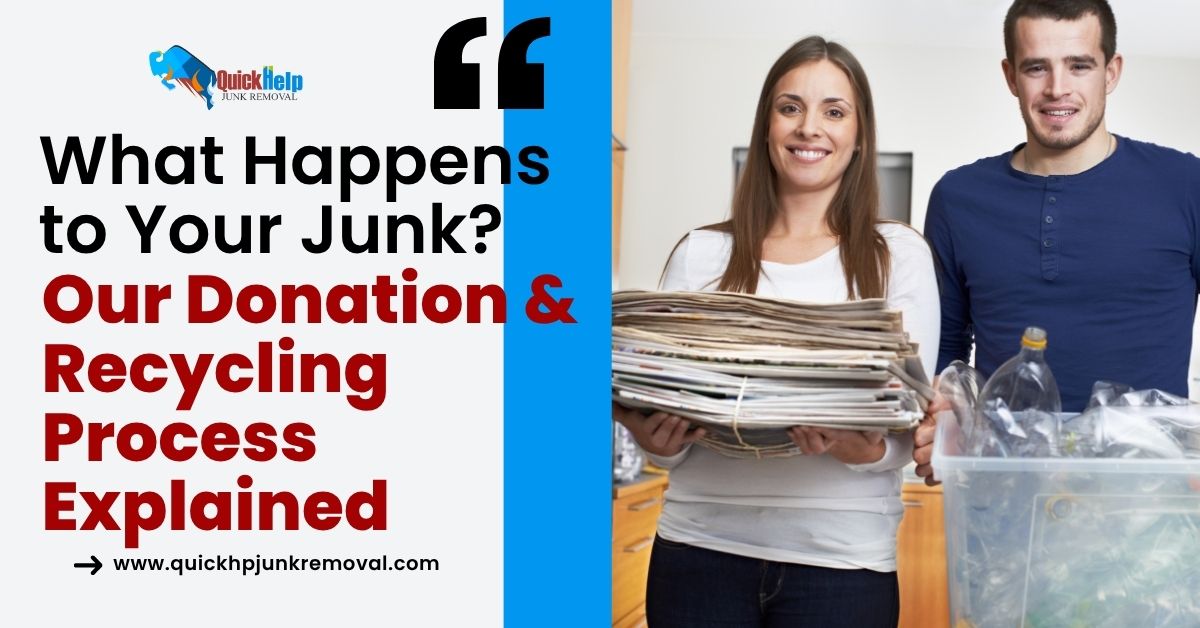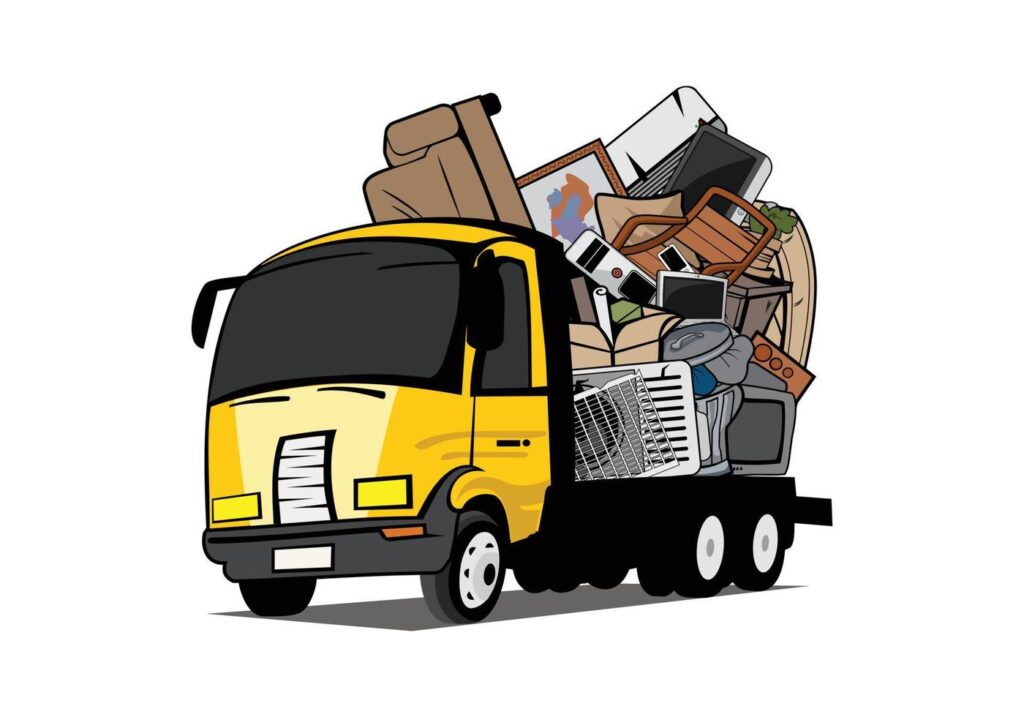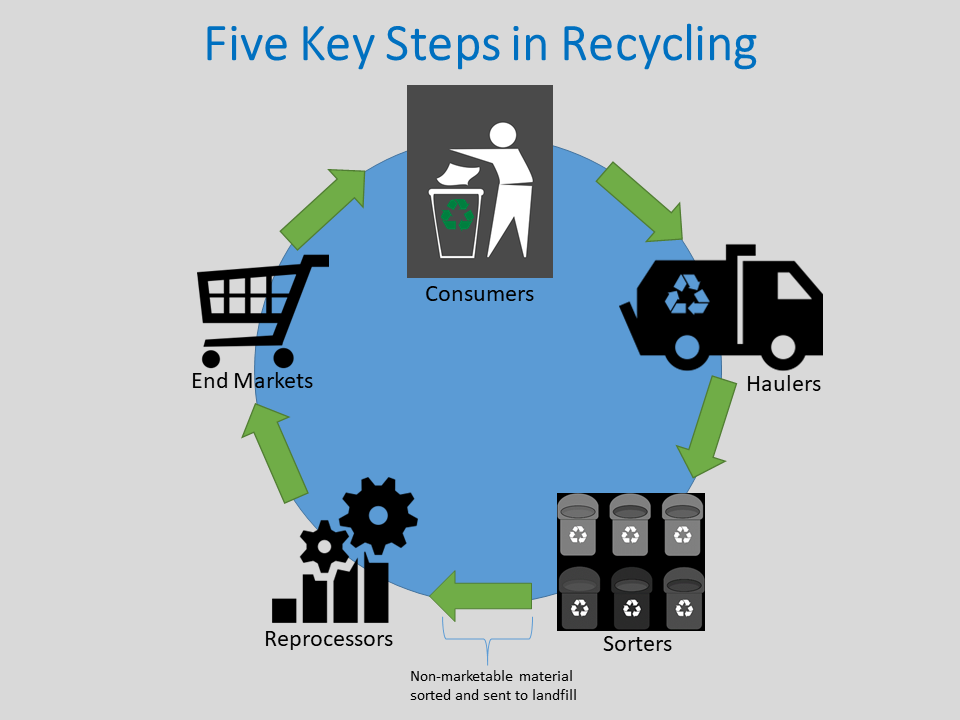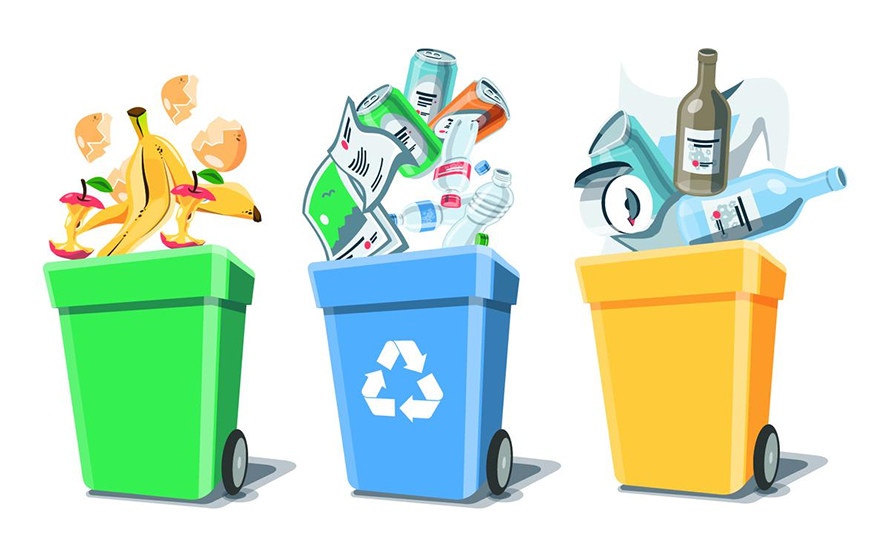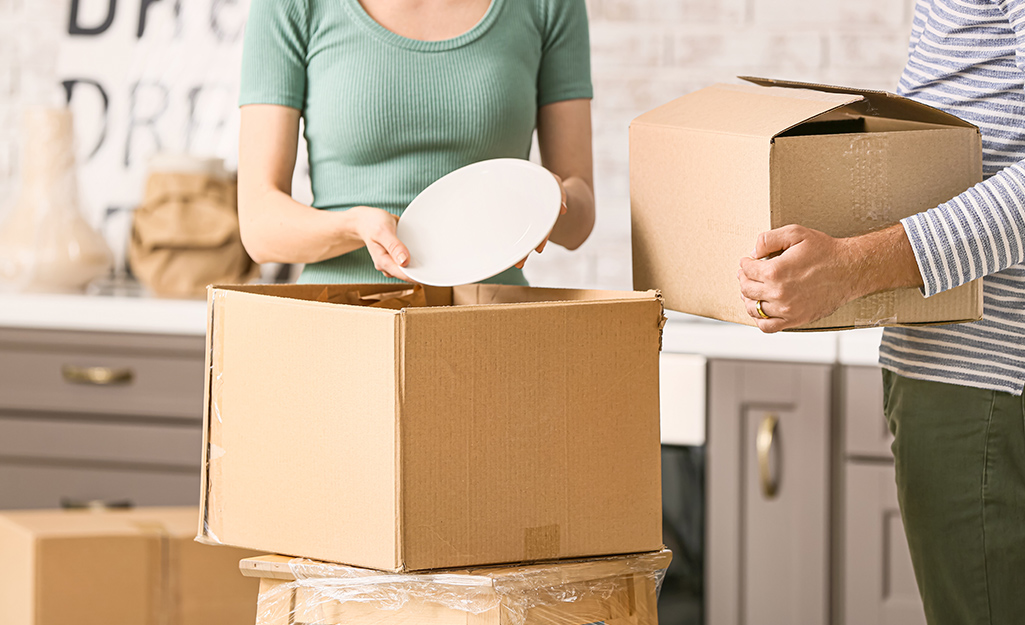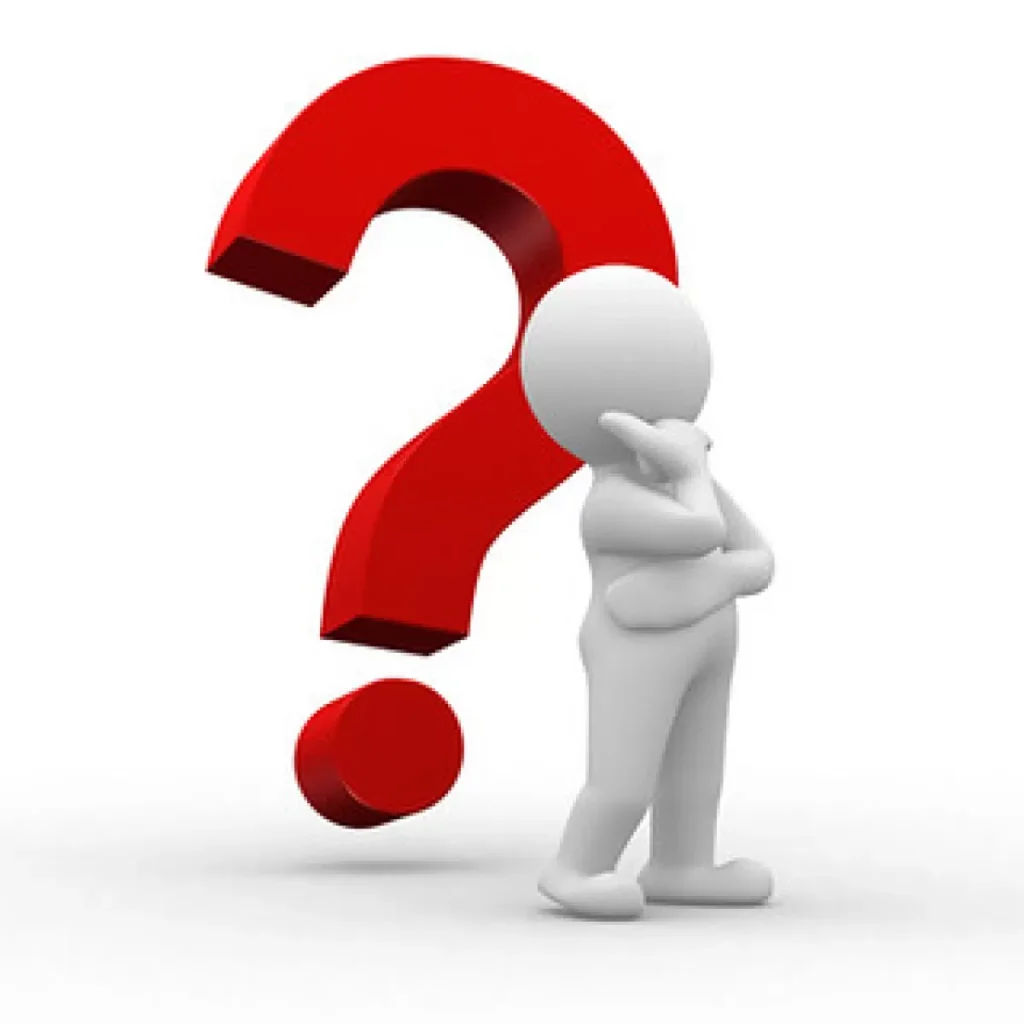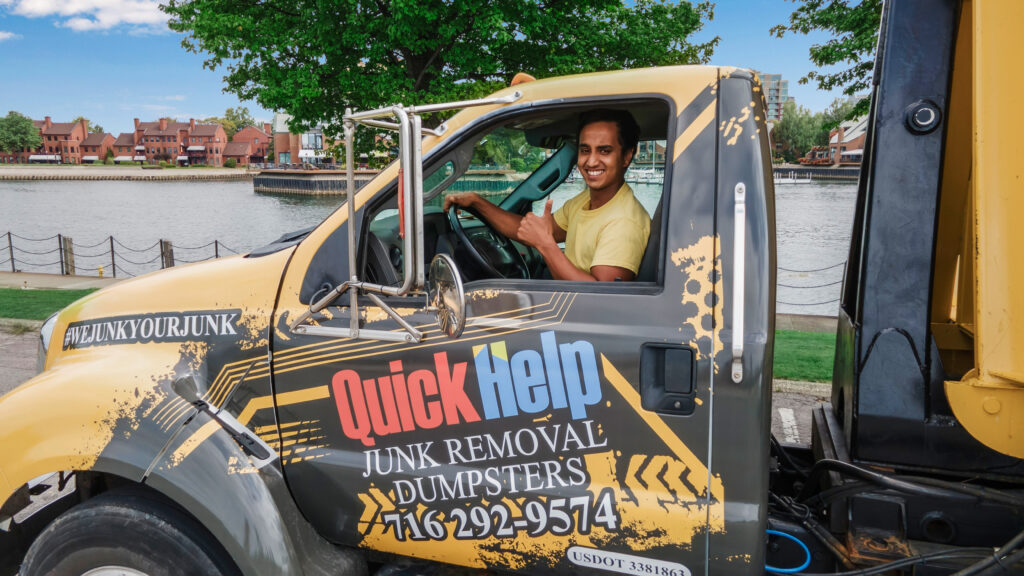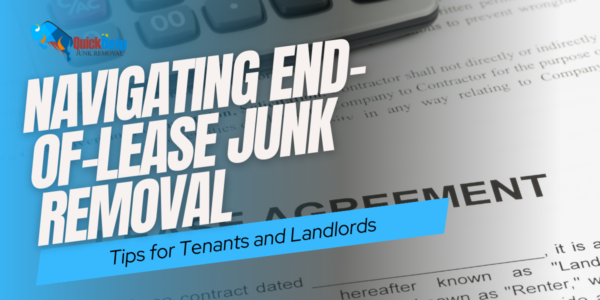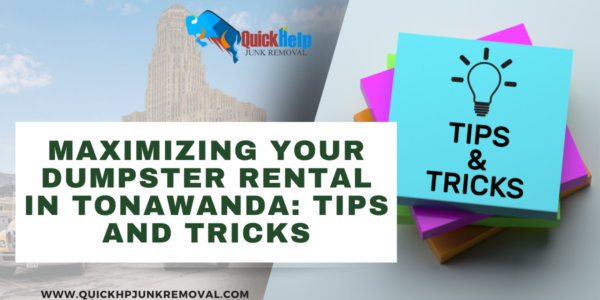So, you’ve decided to finally clear out that clutter in the garage, basement, or spare bedroom awesome! But once the crew from Quick Help Junk Removal hauls it all away, have you ever wondered what actually happens to your junk?
We get that question a lot. And here’s the honest truth: not everything we pick up ends up in a landfill. In fact, a big part of what we do is focused on donation and recycling because we believe that helping the environment and our local Buffalo community should go hand in hand with junk removal.
Let’s walk you through our process so you can feel good about cleaning up.
Step 1: It All Starts at Pickup
When our friendly team shows up at your location, the sorting process begins right there at the curb. We don’t just toss everything into a truck and hope for the best we’re trained to identify items that can be reused, recycled, or donated.
Whether it’s an old couch, broken television, or a pile of cardboard boxes, we do a quick scan and start setting aside what can be diverted from the landfill.
Step 2: What Gets Donated
Gently Used Furniture
If you’ve got furniture that still has life in it like sofas, dressers, dining tables, or chairs we make every effort to donate them. We work with local charities and non-profit groups in the Buffalo area who are always looking for quality pieces for families in need.
Household Items and Appliances
Things like lamps, coffee makers, cookware, and more often go to donation centres too especially when they’re in working condition. Many of our partners refurbish these items or use them in support housing setups.
Clothes and Textiles
Your old clothes don’t have to end up in the trash. We sort through textiles and send them to clothing banks or recycling centres. Even worn-out items can often be turned into insulation or industrial rags.
Toys, Books, and Electronics
Kid items and small gadgets that still function are often donated to schools, shelters, or local donation drives. It’s a great way to pass joy along to someone else in the community.
Step 3: What Gets Recycled
E-Waste (Electronics)
Old TVs, laptops, phones, and cords are considered e-waste. These can be harmful to the environment if improperly dumped. We take them to certified recycling facilities where they’re safely broken down and sorted for usable materials.
Metal and Wood
Scrap metal from appliances or renovation debris gets separated and sent to metal recycling centres. Wood that’s untreated or from old furniture is either recycled or reused, depending on condition.
Paper and Cardboard
Post-holiday packaging, moving boxes, and documents all head to local recycling plants. When it comes to cardboard, we’re careful to keep it dry and intact so it can be reused efficiently.
Appliances
Got an old fridge or air conditioner? We make sure refrigerants are safely removed, then recycle the metal and plastic components. It’s all done according to EPA regulations.
Step 4: Responsible Disposal
Unfortunately, not everything can be salvaged. Broken, mouldy, or unsafe items like soiled mattresses or certain types of treated wood may need to go to a landfill. But even then, we try to minimize waste by filling our trucks in a way that avoids unnecessary trips and fuel use.
Landfilling is always our last resort.
Why This Matters: The Bigger Picture
Choosing to declutter is already a great move for your mental space and home life. But knowing that your junk might help a neighbor, reduce waste, or avoid polluting the environment? That’s the icing on the cake.
You’re reducing landfill volume.
You’re helping Buffalo families.
You’re supporting sustainability.
How You Can Help Us Help Others
Want to make the donation and recycling process even easier?
1. Label Items
When possible, label boxes or bags as “donate,” “recycle,” or “trash.” This helps us sort quicker.
2. Keep It Dry
Recyclables like cardboard and paper are best when dry. If it’s raining, try to keep them covered until pickup.
3. Let Us Know
If there are items you specifically hope will be donated, tell us! We’ll prioritize those pieces when sorting.
Why Choose Quick Help Junk Removal?
We’re not just your average junk haulers. At Quick Help Junk Removal, we go the extra mile to make sure your junk is handled responsibly. Serving Buffalo, Tonawanda, Hamburg, and nearby areas, we offer:
Full-service junk removal
Affordable dumpster rentals in various sizes
A commitment to eco-friendly disposal and community support
Ready to Clear the Clutter?
Let’s clean out your space AND give back to the community while we’re at it. Whether you’ve got a full house or just a garage full of odds and ends, we’ve got you covered.
📞 Call or text us at 716-292-9574
🌐 Visit https://quickhpjunkremoval.com to book your junk removal or dumpster rental today.
Let’s give your junk a second chance—and make Buffalo a cleaner, kinder place to live.


